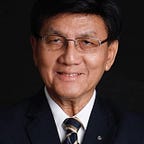Musings
EDSA — The People’s Highway
It is a circumferential road that links the component cities and towns of Metropolitan Manila to each other
EDSA is the most famous highway in the Philippines. Anyone who visits Metro Manila cannot miss EDSA. From the mega city’s international airport, anyone on his way to any of the dozen cities that comprise Metro Manila is bound to pass through this highway. It is a circumferential road that links the component cities and towns of Metropolitan Manila to each other.
EDSA are the initials of the official name of the highway. The full name is Epifanio Delos Santos Avenue. The name is that of a Filipino patriot, whose life and image is hardly known to many Filipinos. Why the highway was named after him is a mystery to most. Before it got the name EDSA, the road was known as Highway 54. It is one of the longest highways in the Philippines. Certainly, today, it is the most crowded.
It became inextricably linked to modern Philippine history in February, 1986, when millions of Filipinos gathered on EDSA to protest against the two-decades-long abusive and corrupt dictatorship of then Philippine President Ferdinand Marcos.
The people encamped on the highway, in front of two large military camps, refusing to leave and uncowed by soldiers in full battle gear that were sent to disperse the crowd. Tanks were stopped dead in their tracks by people kneeling and praying the holy rosary while some of them handed out fresh flowers to the soldiers in a symbolic gesture of peace.
The stand-off lasted for days. Entire families joined the protest rally. They brought food and drinks which they shared with one another. Most of all, they brought their religious icons and rosary beads, and prayed together without ceasing.
Police and the military units that were sent to disperse the protestors eventually joined the people. Despite orders from higher authorities, not a single shot was fired at the crowd. Military helicopters hovered above menacingly, but the people were not awed.
Eventually, the dictator and his family and the security troops that guarded them caved in. They fled the presidential palace aboard US helicopters that were sent to fetch them. In an American airforce base outside of Manila, they took a connecting flight to Honolulu in Hawaii, where they lived in exile for several years.
Thus ended the EDSA Revolution and democracy restored in the Philippines. It was hailed as the first peaceful revolution in the world, where an entrenched dictatorial government was toppled, without a single shot being fired.
To this day, people gather every year in the last week of February at monuments built along EDSA to commemorate the world’s first peaceful revolution in a democratic republic.
But the areas that surround EDSA no longer look the same. Three decades after the EDSA revolution, the cities through which EDSA cuts, have allowed the construction of skyscrapers and supermalls, flyovers and light rail transport stations, hotels and restaurants, department stores, commercial showrooms, and office buildings on both sides of EDSA. Giant billboards dot the full length of the highway.
Worst of all, hundreds of thousands of motor vehicles of different sizes and categories cram the 12-lane highway everyday, causing stifling traffic every single day of the week. What ought to be a mere half-hour trip can last more than three to four hours on any given day, from early morning to late at night.
The gas emissions of stalled vehicles and the man hours lost in traffic are estimated to cost billions of pesos daily.
Dozens of experiments aimed at reducing traffic or managing it better have been launched. Every new administrative team that comes into office introduces purported innovations and reforms. None has worked so far. The situation only seems to get worse each time.
EDSA — a showcase of democracy — has become Metro Manila’s worst nightmare. And the planners’ and bureaucrats’ unwinnable challenge.
Allow me to share with you 2 of my earliest articles in Ave Maria:
Ave Maria!
